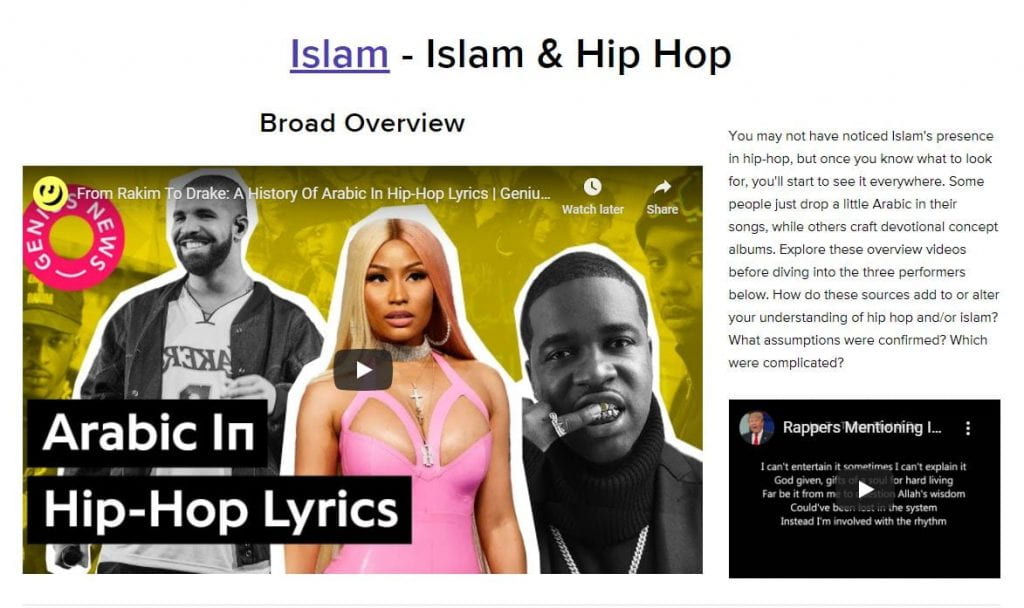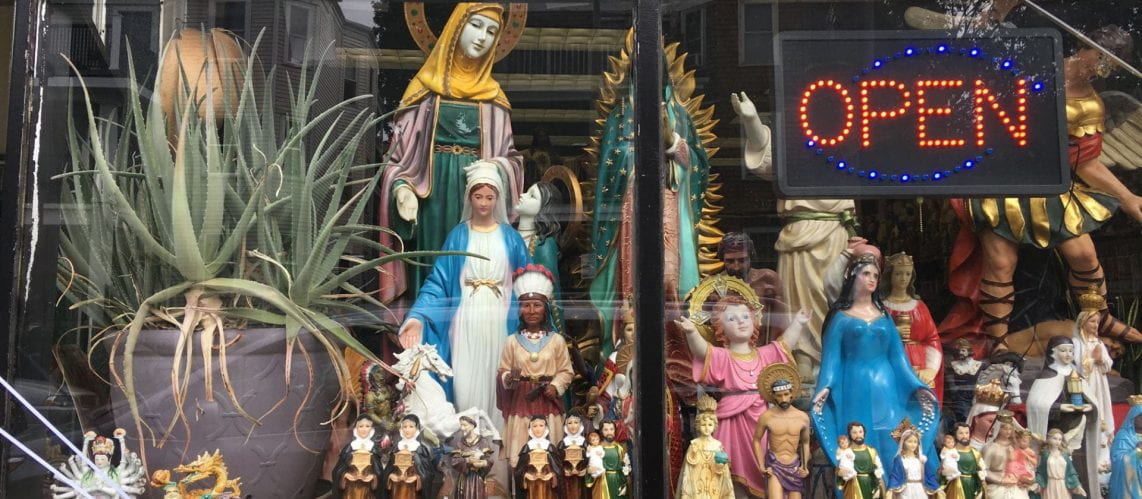By Sean Radcliff
Sean Radcliff is a social studies teacher at Rolling Meadows High School in Rolling Meadows, IL. He is currently pursuing the M.A. in Religion and the Religious Studies and Education Certificate at Harvard Extension School.
 When I set out to teach a class on the “major world religions,” I knew that so much would have to end up on the cutting room floor. I knew that I’d have to be efficient in order to cover the “most important aspects” of each religion. With that in mind, I planned out my whole year in advance – something I had never done before. I’d have 12 blocks of 90 minutes each to teach about Islam. It still wasn’t a lot of time, but I organized what I thought was a really solid unit. But as we were getting close to finish the 3rd quarter of the student year, COVID-19 disrupted all of my plans.
When I set out to teach a class on the “major world religions,” I knew that so much would have to end up on the cutting room floor. I knew that I’d have to be efficient in order to cover the “most important aspects” of each religion. With that in mind, I planned out my whole year in advance – something I had never done before. I’d have 12 blocks of 90 minutes each to teach about Islam. It still wasn’t a lot of time, but I organized what I thought was a really solid unit. But as we were getting close to finish the 3rd quarter of the student year, COVID-19 disrupted all of my plans.
Overnight, the seven weeks I thought I had remaining in the semester turned into only five traditional class periods, based on how my district approached our emergency remote learning. On top of that, students had almost no structure or extrinsic motivation to do anything. For a brief moment, I considered not teaching an Islam unit because I thought that I did not have enough time to teach Islam in a similar manner that I taught the other religions. I wouldn’t be able to showcase the complexity and diversity of expressions. I was worried that I’d do more harm than good. But then I thought about the damage that I would be doing by choosing to ignore Islam. I certainly would create no cultural peace, as none of my students’ false assumptions would be challenged.
At that point, I realized that I should build my unit around mitigating the cultural violence that students were walking in with. My unit wouldn’t necessarily teach all of Islam, but it would investigate many assumptions about Islam’s relationship with western values. Each lesson would be a window into a specific part of Islam’s relationship with western society. My students have all come across images of violence and oppression in the name of Islam. I wanted to provide counter examples to many of those images. It wasn’t so students would walk away thinking that Islam was extremely progressive and peaceful; it was so students could see that neither violence nor oppression are inherent to Islam.
In addition, I wanted to provide student choice. My district had removed all extrinsic motivation from grades, so I needed to create as many opportunities for intrinsic motivation as possible. I gave the students the ability to choose two of our lesson’s topics. Their choices were the Muhammad cartoon controversy, Muslim oppression in India, The Nation of Islam, Latino converts, Muslim end times, Islam & hip-hop, entering/exiting Islam, Shi’a vs. Sunni, and the Palestinian Side of Things. The students chose Islam & hip hop and the Nation of Islam. Both of those topics are excellent ways to see how religion is embedded in politics & culture (& vice versa).

Students were also given choice in what specific areas they focused on within each lesson. Each lesson was presented magazine style to the students, so they chose what to focus on. Each aspect presented within a topic had many sources that students could look at, so they could take a deep dive on one or two aspects of each lesson. Or they could just look at the surface information for all of the different aspects showcased in each lesson. Students were recommended to spend 20 to 30 minutes going through sources, but again – there was no system of accountability.
Another way I tried to encourage intrinsic motivation was through my source selection. Each topic had extensive readings, but many of my students were choosing to skip over the readings. Early on in the unit, I noticed that students were mainly focusing on aspects that were covered through videos. They weren’t choosing where their focus should be based on interest or importance of the topic – it was almost exclusively decided by the medium the information was presented in. With that in mind, I made videos the focal point of each topic. In addition to increasing engagement, it is important to practice visual literacy. If students are getting the majority of their information through videos, it is important that they are explicitly taught how to comprehend & synthesize that information. The use of videos greatly helped with that matter.
While I think this unit was successful, there are some blind spots. In a whole year of a world religions class, my students only got to learn about Islam through a western lens. This unit did not include much information on non-western Muslims. Even when we showcased Iran, the focus was on an era where Iran was extremely westernized. Also, this unit barely mentions some of the “foundations” of Islam, such as the Qur’an, Muhammad, Shi’a, Sunni, and many other “basic” concepts of Islam. I made a value judgment on what I thought was more valuable to my students, and I could be wrong.
Despite the unit’s inherent shortcomings, it accomplished the goal that guided its design. Many students commented on how “wrong” they were about Islam. I reminded students that we did not look at the whole picture either, but we did show how problematic it is to form simplistic narratives around an entire religion.
Unit Description:
Think about what you know about Muslims & the Islamic faith. Not just the basic “facts” about sacred texts or required acts, but think about how you view Islam in the context of Western society. Growing up in America during the early 2000s, there are very predictable assumptions that you probably have. Many of those assumptions probably fail to capture the complexity of a religion with over 1 billion followers. In this unit, we’ll take several of those assumptions and expand your knowledge with stories and events that counter many of the simplistic narratives.
You won’t walk away from this class as an expert of Islam. People can study religions for years without considering themselves experts. We only have six classes to pull this off. We will make use of those classes by exploring six different vignettes on Islam’s interaction with Western society

